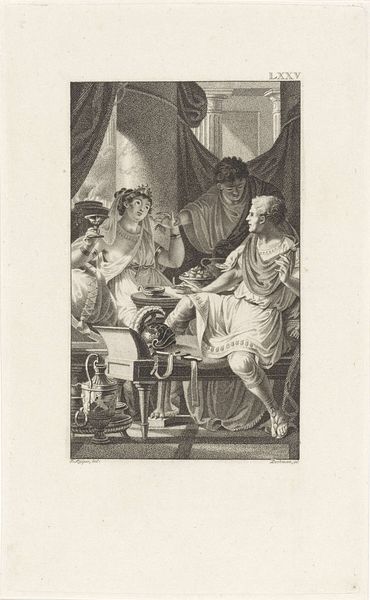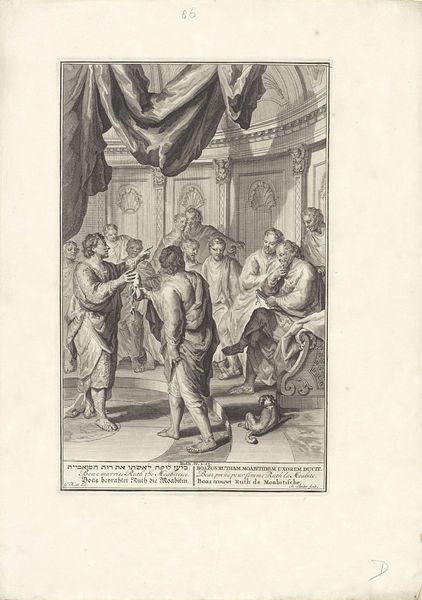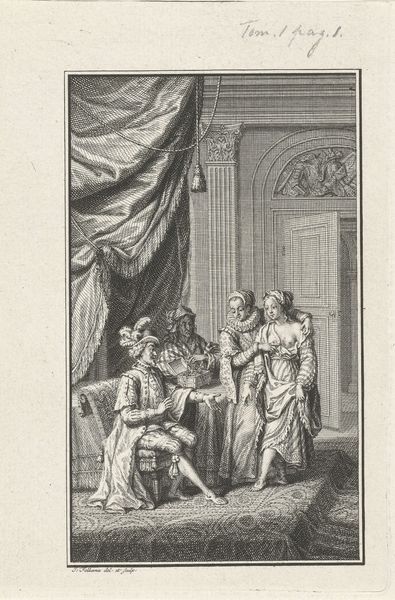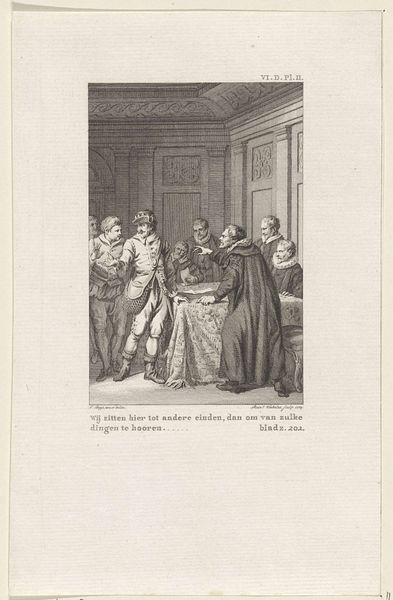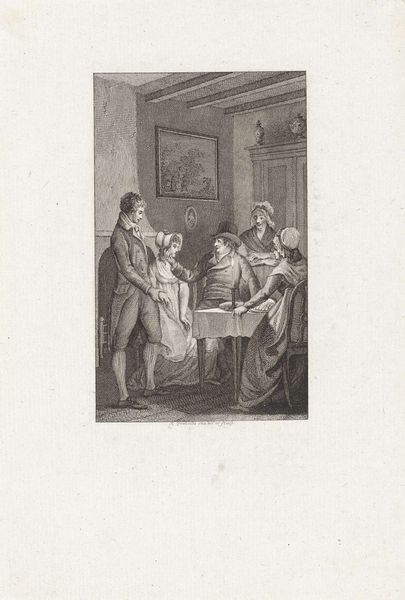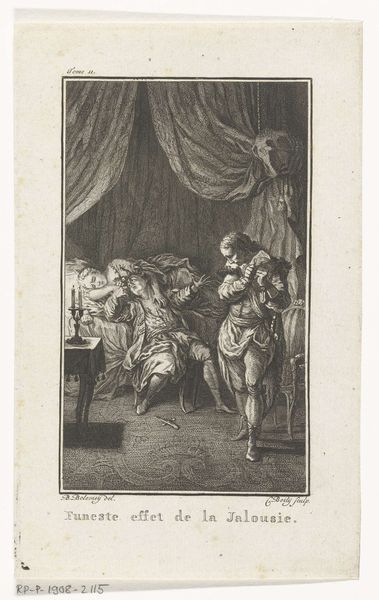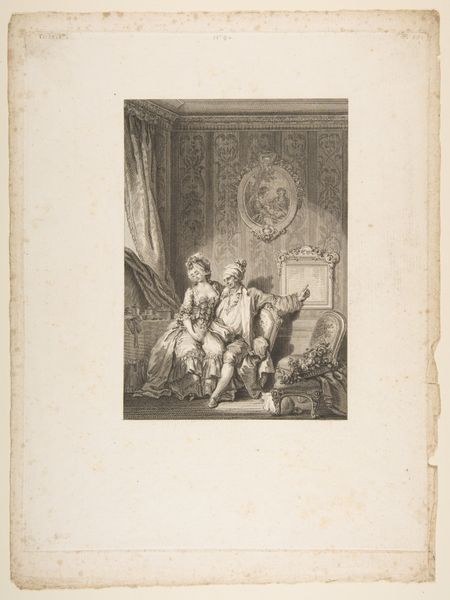
engraving
#
portrait
#
neoclacissism
#
narrative-art
#
old engraving style
#
classical-realism
#
figuration
#
form
#
geometric
#
line
#
history-painting
#
engraving
Dimensions: height 210 mm, width 132 mm
Copyright: Rijks Museum: Open Domain
Ludwig Gottlieb Portman created this print of Caesar admiring Alexander the Great using etching and engraving. It’s a complex process that involves coating a metal plate with wax, then scratching through the wax to expose the metal. The plate is then bathed in acid, which bites into the exposed lines, creating grooves. Finally, the plate is inked and printed, transferring the image to paper. Look closely, and you'll notice the subtle lines and textures achieved through the skillful control of the etching and engraving processes. The depth and precision of these lines determine the tonal range and overall clarity of the print. The image's fine detail and delicate shading is also affected by the artist’s skill. Printmaking was central to the distribution of knowledge in the 18th and 19th centuries, making art accessible to a broader audience. But it was also labor-intensive, requiring trained artisans to execute the complex steps involved. Examining this print, we appreciate the artistry of Portman, and the wider social context in which this artwork was made. The distinction between artistic creation and skilled craft becomes blurred.
Comments
No comments
Be the first to comment and join the conversation on the ultimate creative platform.
